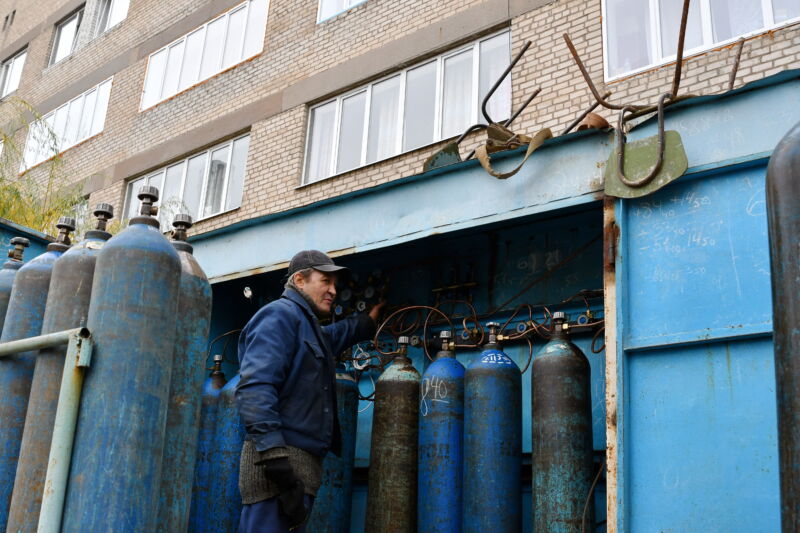
The majority of Ukrainian hospitals could run out of life-saving medical oxygen as of today, endangering the lives of thousands of critically ill patients amid the pandemic, the World Health Organization warned Sunday.
The United Nations agency said it is looking into ways to increase supplies, which would likely require a secure transit corridor through Poland. “It is imperative to ensure that life-saving medical supplies, including oxygen, get to those who need them,” said WHO Director General Dr. Tedros Adhanom Ghebreyesus and WHO Regional Director for Europe Dr. Hans Kluge in a joint statement.
Amid the Russian attack and invasion, trucks are currently unable to transport oxygen supplies from producers to hospitals across Ukraine, including the capital Kiev, the WHO reported. The attack also hampers the production of medical oxygen in the country. Several manufacturers of medical oxygen generators are running out of zeolite, an essential production part that is imported. Safe transport of zeolite to Ukraine is also needed. drs. Tedros and Kluge also warned that patients are at risk as hospitals face power shortages and ambulances transporting patients are at risk of being caught in crossfire.
“Oxygen supply is approaching a very dangerous point in Ukraine,” said Drs. Tedros and Kluge wrote on Sunday. “Most hospitals could use up their oxygen reserves within the next 24 hours. Some are already depleted. This puts thousands of lives at risk.”
Medical oxygen is critical for a variety of patients, including those with severe COVID-19. About 1,700 COVID-19 patients are currently hospitalized in Ukraine, the WHO reports. The country is currently experiencing a COVID-19 wave, driven by the ultra-transmissible ommicron coronavirus variant. According to a report by the United Nations Office for the Coordination of Humanitarian Affairs, the number of active cases increased by 555 percent between January 15 and February 25. That’s probably a significant undercount given the shortages of testing. In addition, oxygen is critical for patients ranging from newborns to the elderly, due to a variety of conditions, such as chronic conditions, sepsis, injuries, and trauma.
The WHO noted that it has worked with Ukraine in recent years to improve its health system, including rapidly scaling up oxygen therapy capacity for critically ill COVID-19 patients during the pandemic. “This progress is now in danger of derailing during the current crisis,” says Drs. said Tedros and Kluge.

